 Poitier heads to parts unknown after a long and unique career. 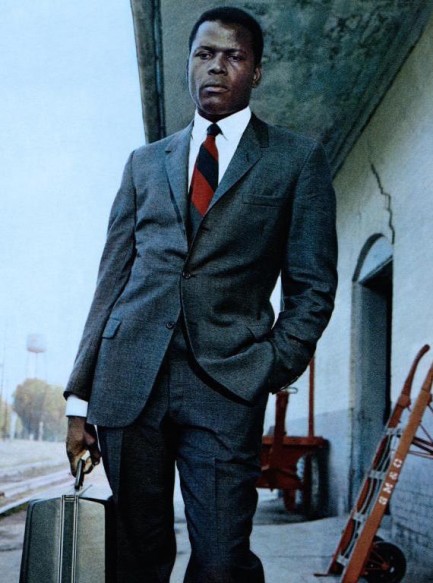
Above is a photo of one-of-a-kind actor and cultural icon Sidney Poitier, who died yesterday aged ninety-four in the Bahamas, where he was born and lived much of his life. He starred in a couple of our favorite lightweight movies, including 1961's Paris Blues and 1992's Sneakers, but this shot is from 1967's unforgettable and topical drama In the Heat of the Night, one of many landmark movies in which he starred. He changed the game. That's really all you can say. See another cool shot of him here.
 Newman and Poitier show Paris how to sizzle. 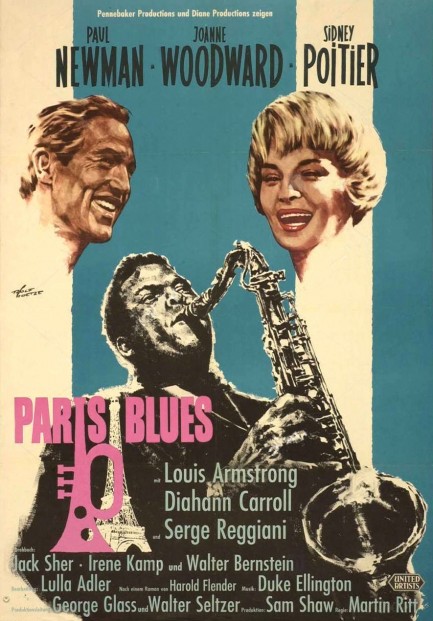
Remember last week we said you should watch the movie Paris Blues? We took our own advice. Above is a nice Rolf Goetze poster promoting the film's run in West Germany, which began today in 1961. The movie features a couple of jazz horn players portrayed by Paul Newman and Sidney Poitier who are having a grand time in Paris playing the clubs and escaping the political unrest in the U.S. Both meet American women, and both fall in love. Poitier's girlfriend Diahann Carroll is deeply concerned with civil rights and goes about convincing Poitier that he's running away from his responsibility to make America better. Pretty soon he feels heavily pressured to go back, even though it means giving up his wonderful life for hatred and turmoil.
Okay. Forgive us. Here's the thing. As foreigners abroad we think this is utter horseshit. We feel no particular allegiance to our birth country, and it's only fair, because the people who really matter feel no allegiance to it either. If they did, then how could captains of industry ship millions of jobs overseas, people who have enough money to live fifty lifetimes constantly dodge taxes, and corporations suck public money out of the federal government until it can't pay for schools and roads? They obviously don't care, so why should we? And why should Sidney Poitier's character care? We don't think an actual man in his situation—especially an African American man who's escaped rampant racism—would let anyone make this an issue for him, not even Diahann Carroll, who's sweet looking, yes, but certainly nothing unique in Paris.
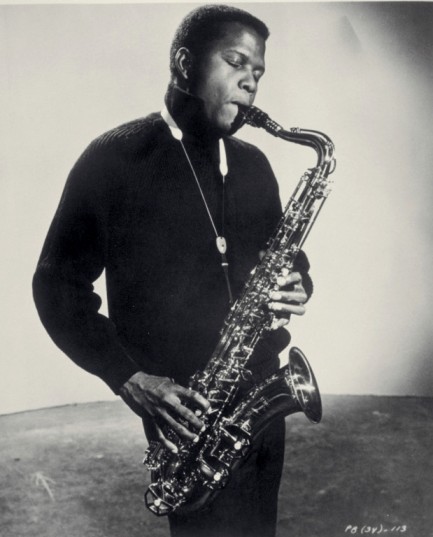 But it's in the script, so Carroll's constant harping on this provokes an inner crisis and Poitier frets and wonders if it's right to live an idyllic life playing jazz music in Paris while his brethren are suffering. Will he go back? Only a viewing of the film will reveal the answer. We'll encourage you to watch it by adding that on the way to his big decision you'll get cool Parisian scenery, lots of scenes in nightclubs, a jazz cameo or two, and an equally complex love story between real-life spouses Newman and Joanne Woodward. While Poitier and Newman aren't actual jazz musicians, their pantomimic musical sequences mostly work, and the movie is fun, exotic, and insouciant most of the way through. Just try not to fall for the Hollywood social engineering that suggests any life outside the U.S. is one filled with the blues. 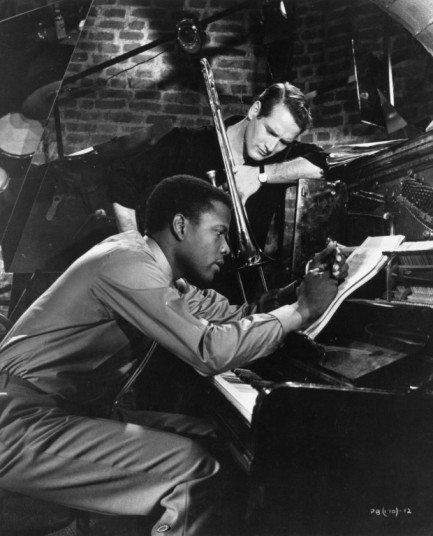 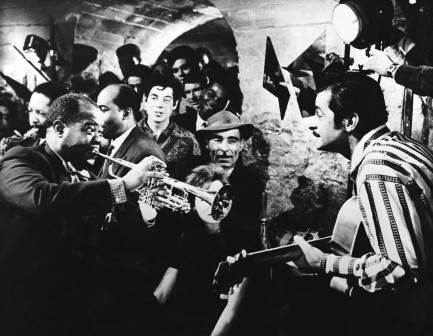 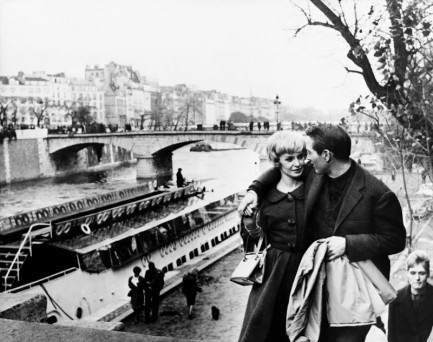 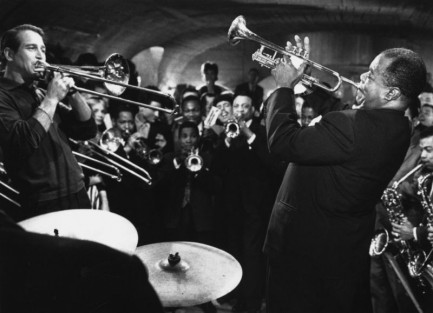 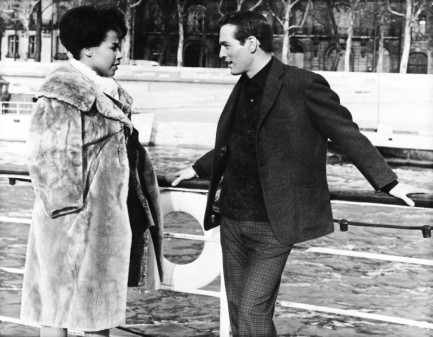 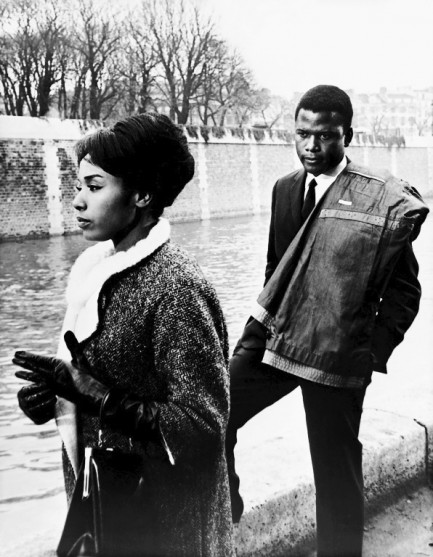 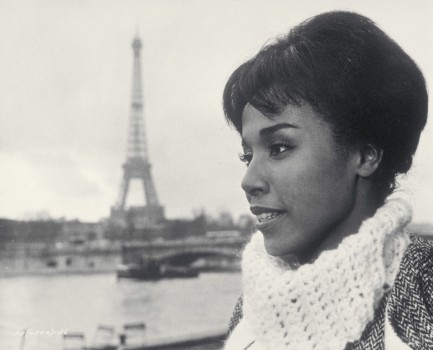
 Sidney Poitier chases the Blues away. 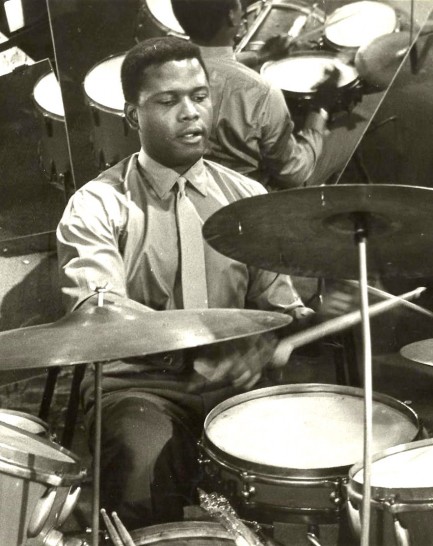
There are plenty of movies about Americans in Paris, and even a few about American jazz musicians in Paris, but for our money Paris Blues is one of the best. It starred Bahamian born actor Sidney Poitier, along with Paul Newman, Joanne Woodward, and Diahann Carroll, and above you see Poitier having a turn on the drums in the nightclub set where much of the movie's action takes place. In the film he doesn't play drums. He's actually a saxophonist. But you know how it is with drums—if they're sitting there vacant somebody's going to start pounding on them. We say that speaking as drummers—yes, both of your Pulp Intl. scribes are drummers, and if we had a dime for every time we found some hoser whaling away uninvited on our expensive gear, well... we'd have a lot of dimes. Anyway, we recommend you check out Paris Blues.
|
 |

The headlines that mattered yesteryear.
2003—Hope Dies
Film legend Bob Hope dies of pneumonia two months after celebrating his 100th birthday. 1945—Churchill Given the Sack
In spite of admiring Winston Churchill as a great wartime leader, Britons elect
Clement Attlee the nation's new prime minister in a sweeping victory for the Labour Party over the Conservatives. 1952—Evita Peron Dies
Eva Duarte de Peron, aka Evita, wife of the president of the Argentine Republic, dies from cancer at age 33. Evita had brought the working classes into a position of political power never witnessed before, but was hated by the nation's powerful military class. She is lain to rest in Milan, Italy in a secret grave under a nun's name, but is eventually returned to Argentina for reburial beside her husband in 1974. 1943—Mussolini Calls It Quits
Italian dictator Benito Mussolini steps down as head of the armed forces and the government. It soon becomes clear that Il Duce did not relinquish power voluntarily, but was forced to resign after former Fascist colleagues turned against him. He is later installed by Germany as leader of the Italian Social Republic in the north of the country, but is killed by partisans in 1945.
|

|
|

It's easy. We have an uploader that makes it a snap. Use it to submit your art, text, header, and subhead. Your post can be funny, serious, or anything in between, as long as it's vintage pulp. You'll get a byline and experience the fleeting pride of free authorship. We'll edit your post for typos, but the rest is up to you. Click here to give us your best shot.

|
|


















































































